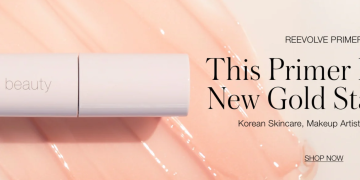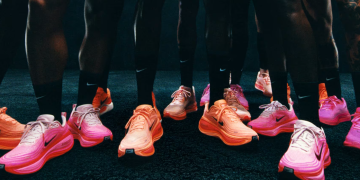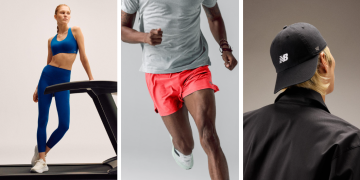
In recent years, the intersection of fashion and technology has led to significant innovations, transforming how we think about and interact with our clothing. Wearable technology, an emerging field that blends cutting-edge electronics with fashion design, is revolutionizing the fashion industry. This article explores how wearable technology is reshaping fashion, examining its impact on design, functionality, and consumer experience.
Introduction to Wearable Technology
Definition and Scope
Wearable technology refers to electronic devices that can be worn on the body and incorporate various technological functionalities. These devices include smartwatches, fitness trackers, smart glasses, and even clothing embedded with sensors and electronics. The primary goal of wearable technology is to integrate technology seamlessly into daily life, enhancing convenience, health monitoring, and personal expression.
Evolution and Historical Context
The concept of wearable technology is not entirely new. Early examples include watches and medical devices designed to monitor health. However, the recent surge in wearable tech can be attributed to advances in miniaturization, connectivity, and material science, enabling more sophisticated and fashion-forward applications.
Wearable Technology in Fashion: Key Innovations
Smartwatches and Fitness Trackers
- Functionality: Smartwatches and fitness trackers have become ubiquitous, offering functionalities beyond traditional timekeeping. These devices track health metrics such as heart rate, sleep patterns, and physical activity, while also integrating with smartphones for notifications and apps.
- Design Integration: Modern smartwatches are designed with aesthetics in mind, offering customizable watch faces, interchangeable bands, and stylish designs that blend seamlessly with various fashion styles.
Smart Clothing
- Textile Integration: Smart clothing integrates technology directly into fabrics. Examples include jackets with built-in heating elements, shirts with biometric sensors, and pants with embedded LEDs for visibility and style. These garments offer enhanced functionality, such as temperature regulation and health monitoring.
- Fashion-forward Designs: Designers are incorporating smart textiles into high-fashion collections, creating garments that are both technologically advanced and visually appealing. These innovations offer consumers unique, stylish options that enhance their lifestyle.
Augmented Reality (AR) and Virtual Reality (VR)
- Virtual Try-Ons: AR technology allows users to virtually try on clothes using apps and mirrors, offering a new way to experience fashion without physically trying on garments. This technology reduces the need for in-store fittings and enhances online shopping experiences.
- VR Fashion Shows: VR technology is transforming the fashion show experience by allowing users to attend virtual runway shows and explore digital fashion collections from the comfort of their homes.
Smart Accessories
- Smart Glasses: Smart glasses, like Google Glass and more recent designs, provide users with augmented reality experiences, notifications, and hands-free interaction with digital content. These accessories blend technology with style, offering functionality without compromising fashion.
- Tech-Enhanced Footwear: Innovative footwear designs incorporate technology such as LED lights for visibility, pressure sensors for performance tracking, and adaptive lacing systems for customized fit.
The Impact of Wearable Technology on Fashion Design
Redefining Aesthetics
- Blending Functionality and Fashion: Wearable technology challenges traditional notions of fashion by combining functionality with aesthetics. Designers are now tasked with integrating electronic components into garments without compromising their visual appeal.
- Innovative Materials: The use of new materials, such as conductive fabrics and flexible electronics, allows designers to experiment with novel textures and designs, creating garments that are both functional and fashionable.
Enhanced Personalization
- Customizable Features: Wearable technology enables personalized experiences, such as adjustable heating levels in smart jackets or customizable watch faces on smartwatches. This level of personalization allows consumers to tailor their clothing and accessories to their preferences.
- Adaptive Fashion: Some wearable technologies can adapt to environmental conditions or user preferences in real-time. For example, clothing that changes color based on temperature or lighting conditions offers dynamic and customizable fashion options.
Sustainability and Innovation
- Eco-friendly Materials: The integration of technology in fashion also opens opportunities for sustainable innovation. Designers are exploring eco-friendly materials and energy-efficient technologies to minimize the environmental impact of wearable tech.
- Lifecycle Tracking: Wearable technology can provide insights into the lifecycle of garments, helping consumers make more informed decisions about their purchases and encouraging sustainable practices.
The Consumer Experience with Wearable Technology
Convenience and Connectivity
- Seamless Integration: Wearable technology enhances daily life by providing convenient features such as health monitoring, notifications, and hands-free interactions. These devices are designed to integrate seamlessly into users’ routines, offering practical benefits alongside their fashion appeal.
- Enhanced Communication: Smartwatches and accessories facilitate communication by allowing users to receive calls, messages, and notifications directly on their devices, reducing the need for constant phone checking.
Health and Wellness Benefits
- Fitness Tracking: Wearable fitness trackers offer detailed insights into physical activity, sleep patterns, and overall health. This data empowers users to make healthier lifestyle choices and track their progress toward fitness goals.
- Medical Monitoring: Some wearable devices are equipped with advanced health monitoring features, such as ECG and blood oxygen level tracking. These technologies provide valuable information for managing chronic conditions and maintaining overall well-being.
Enhanced Shopping Experience
- Virtual Try-Ons: AR technology enhances online shopping by allowing users to virtually try on clothes and accessories. This feature helps consumers make better purchasing decisions and reduces the likelihood of returns.
- Interactive Retail Experiences: In-store experiences are also evolving, with retailers incorporating interactive technology such as smart mirrors and digital fitting rooms to engage customers and enhance their shopping experience.
Challenges and Considerations
Privacy and Security
- Data Protection: Wearable technology collects personal data, such as health metrics and location information. Ensuring the privacy and security of this data is a critical consideration for both consumers and manufacturers.
- Cybersecurity Risks: As wearable devices become more connected, they are vulnerable to cybersecurity threats. Manufacturers must implement robust security measures to protect against data breaches and unauthorized access.
Design and Comfort
- Balancing Functionality and Wearability: Integrating technology into clothing and accessories presents challenges in terms of design and comfort. Ensuring that electronic components do not compromise the wearability and aesthetic of garments is a key consideration for designers.
- Durability and Maintenance: Wearable technology must be durable and easy to maintain. Designers need to consider how electronic components can withstand daily wear and environmental factors.
Accessibility and Affordability
- Cost Considerations: Wearable technology can be expensive, potentially limiting access for some consumers. Making these innovations more affordable and accessible is a crucial challenge for the industry.
- Inclusive Design: Ensuring that wearable technology meets the needs of diverse body types and personal preferences is essential for creating inclusive fashion solutions.
The Future of Wearable Technology in Fashion
Emerging Trends
- Advanced Materials: The future of wearable technology will likely see the development of more advanced materials, such as smart fabrics that can change their properties based on environmental conditions.
- Integration with AI: Artificial intelligence (AI) will play a significant role in enhancing the capabilities of wearable technology, enabling more personalized and intuitive experiences.
Collaboration and Innovation
- Partnerships Between Fashion and Tech: Collaborations between fashion designers and technology companies will continue to drive innovation, resulting in new and exciting applications for wearable technology.
- Consumer-Centric Solutions: The focus will shift toward creating consumer-centric solutions that enhance comfort, functionality, and style. The integration of user feedback will be crucial in shaping the future of wearable tech.
Broader Industry Impact
- Redefining Fashion Norms: Wearable technology will continue to redefine fashion norms, challenging traditional notions of style and functionality. As technology evolves, fashion will increasingly embrace innovation and experimentation.
- Sustainable Practices: The emphasis on sustainability will drive the development of eco-friendly and socially responsible wearable technology, contributing to a more sustainable fashion industry.

Wearable technology is revolutionizing the fashion industry by integrating advanced electronics with stylish design, creating innovative and functional products that enhance daily life. From smartwatches and fitness trackers to smart clothing and augmented reality, wearable tech offers a diverse range of applications that transform how we interact with fashion. As technology continues to advance, the future of wearable tech in fashion promises exciting developments and opportunities for creativity, convenience, and sustainability. Embracing these innovations allows consumers to enjoy the benefits of cutting-edge technology while staying stylish and connected.











